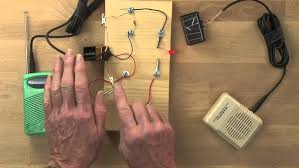
Imagine a world where the noise around us could power our devices. From the hum of traffic to the buzz of conversation, scientists are exploring ways to capture sound energy and convert it into usable electricity, opening new possibilities for sustainable energy solutions.
1. What Is Sound Energy?
Sound is a form of mechanical energy produced by vibrations traveling through air, water, or solids. These vibrations create pressure waves that can be harnessed with the right technology. Key points include:
- Sound energy is everywhere: traffic, machinery, human activity, and nature.
- It’s low-power compared to other sources, but constantly available in urban environments.
- Capturing it requires sensitive devices that can convert vibrations into electrical signals.
2. How Sound Can Be Converted to Electricity
Several technologies are being developed to turn sound into usable energy:
2.1 Piezoelectric Materials
- Certain materials generate electricity when mechanically stressed by sound waves.
- Can be embedded in surfaces like walls, floors, or speakers to harvest energy.
2.2 Electromagnetic Systems
- Vibrating membranes or coils move within magnetic fields, inducing electric current.
- Often used in small-scale applications such as sensors or wearable devices.
2.3 Acoustic Metamaterials
- Specially designed materials amplify and direct sound energy toward conversion devices.
- Can improve efficiency in noisy environments.
3. Potential Applications
- Wearable devices: Charging small electronics using ambient sound.
- Urban energy harvesting: Capturing energy from traffic, trains, and industrial noise.
- Medical devices: Powering implants or sensors with the sounds of the human body.
- Remote sensors: Using sound energy to reduce dependence on batteries in inaccessible locations.
While still in early stages, these applications hint at a future of sustainable, small-scale energy harvesting.
4. Challenges to Overcome
- Low energy output: Most sound is weak and difficult to capture efficiently.
- Device sensitivity: Converting energy from irregular and fluctuating sounds is technically challenging.
- Cost and scalability: Making practical, affordable devices for large-scale use remains a hurdle.
- Environmental interference: Other vibrations or noise may reduce efficiency.
5. The Future of Sound Energy
Advances in nanotechnology, metamaterials, and energy storage could make sound energy harvesting practical for everyday use. Imagine:
- Streets and subways powering streetlights from traffic noise.
- Wearable gadgets charging as you move through bustling cities.
- Industrial plants using their own machinery noise to partially power operations.
While it may not replace solar or wind power, sound energy could complement other renewable sources, especially in urban environments.
Final Thoughts
Turning sound into energy represents an innovative, eco-friendly approach to harnessing power from the environment. By converting ambient noise into electricity, scientists are finding ways to make everyday sounds serve a practical purpose.